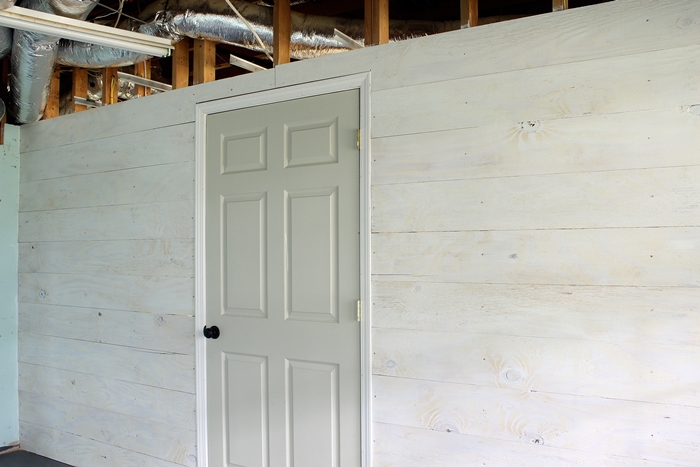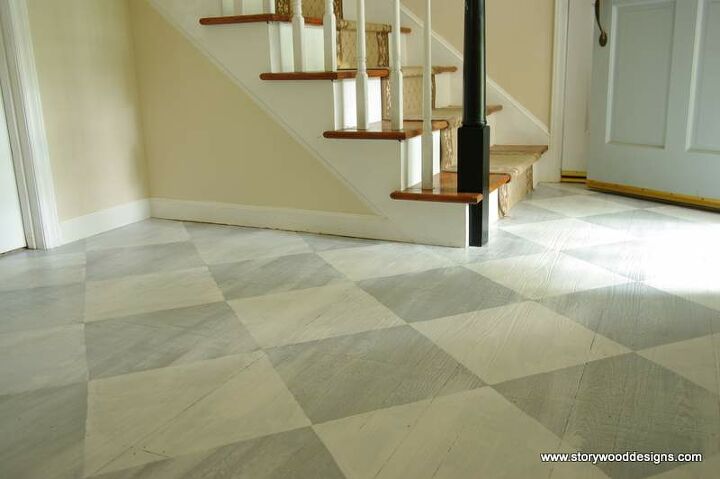13 Techniques to Learn to Whitewash Anything in Your Home
Whitewashing is simple and accessible. It can be an effective way to repurpose old furniture or to give a completely different and refreshing look to a room. This guide will showcase some of the best ways to implement the whitewashing technique that you can use as inspiration for your own whitewashing projects.
What is Whitewashing?
Whitewashing is an incredibly simple way to breathe new life into almost anything that allows paint to stick and dry to it. The technique involves covering the entire surface with white paint. You can change the consistency of the whitewash to make it look thicker and fuller - or even paler, for a more rustic look. The more water you add to the paint, the paler the whitewash will look. This works well for surfaces that are light in color to start with. Hometalker Gretchen added water to create this great look for her basement wall. Get tutorial here
How to Whitewash With the Candle Method
It's easy to learn how to whitewash with the candle technique. Simply rub a candle over random parts of the surface first - the wax will allow the whitewashing to work to its full capacity. Next, cover the piece of wood in white paint. Let it dry. Then, take a rag and wipe away any paint that hasn't dried - which will be over the wax. This will have created the whitewashed look that is different to completely coating a surface in white paint. Get tutorial here
How to Whitewash With the Scraper Method
The scraper technique is just as simple to whitewash furniture that you've had for a while. Once you've washed the surface with warm, soapy water and allowed it to dry, pour your white paint onto the surface. Next, take a scraper - the same one you use to de-ice a car windscreen or to apply wallpaper - and begin moving the paint around the surface with the scraper. The white paint will stick to the grooves in the wood and give the look of whitewashing, where the entire surface isn't one shade of white. Get tutorial here
Whitewashed Brick Chimney
Whitewashing can be applied to almost any room and surface in the house. It's not just about knowing how to whitewash furniture.
Take a fitted feature of a room that could do with being reinvigorated, for example. It's easy to whitewash brick - and as this whitewashed chimney stack shows, it can really change the flow of a room. Mix white latex paint with water and apply using a spray bottle to achieve the whitewashed look that Hometalker Christi Joyce got on their chimney stack. Get tutorial here
How to Whitewash Wood
Knowing how to whitewash furniture can help make a huge difference to a piece of old furniture and the way it blends in with the other pieces in a room. Instead of replacing the useful and functional furniture, add a splash of colour. As these whitewashed cabinet doors show, a splash of whitewash can result in a completely different flow in the room. The technique for how to whitewash wood cabinets calls for paint mixed with water, with any excess mixture being wiped away to give the paler look. Get tutorial here
How to Whitewash Floors
Whitewashing isn't just for furniture - tired floors can benefit from being whitewashed too. This can attract more light to a room and open the space up. Applying whitewash to the floors is simple. Hometalker Storywood Designs added a checkerboard effect first. Once it dried, they applied a lacquer of whitewash paint. This gives a rustic air and adds a classic element to the room, despite being a new feature. Get tutorial here
How to Install and Whitewash Wood Paneling
Sometimes the DIY approach to home redesign can be miles better than complete refits, as this whitewash wood paneling proves. Whitewashing can be used not just as a feature element in a room, but as the main focus point too. To get the whitewash wood paneling effect, simply follow one of the whitewashing techniques above. You can choose how pale you want the whitewashing to be by controlling how much water you use and how many applications you do. Get tutorial here
How to Whitewash a Table
Whitewashing can upgrade more functional pieces of furniture too, especially those which have little variety when you purchase them, such as a dining table, which is usually brown wood. The technique to whitewash the wood of the dining table follows the approach where the excess is removed with a rag to give the whitewash a patchier quality, which eventually ends up giving it a classic feel as though the table has been like that for decades. This can help if you are changing a room's colors but like the main piece of furniture. Get tutorial here
How to Paint Over Paint
Sometimes we want to change the look of a piece of furniture that has already been painted. The good news is that you can still whitewash over a painted surface - but the effect may be darker and deeper than other examples of whitewashing. The technique will remain the same, but the paint will need to be applied to the point that it covers the original surface. Dark surfaces will produce whitewash effects if only one coat is applied. Get tutorial here
How to Whitewash Outside
Whitewashing can still look effective outside. The only difference here is the need to ensure the paint is durable to the elements. Follow the same techniques for whitewashing interiors, but make sure that the paint is suitable. And you'll need to apply several more coats than normal so that the paint attaches to the outside walls. While the whitewash look might not be as pale and patchy as inside, the exterior still retains the classic whitewash feel. Get tutorial here
How to Whitewash Terracotta
If you didn't want to make a huge commitment to whitewashing for your first time, you can always choose something smaller, yet still as iconic to whitewash - like a plant pot.
Terracotta is a perfect material to apply whitewash to. The technique for doing so is simple. Apply a mixture made of equal parts chalk paint and water to the clean pot. Then, after one minute of drying, use a rag or old t-shirt to wipe parts of the paint away, leaving an imperfect look that's whitewashing perfection. Get tutorial here
How to Whitewash Faux Silverleaf
Whitewashing can produce great results when used to do something like Hometalker Deborah.covington has done with a faux silverleaf effect.Simply whitewash an old table and then apply the faux silverleaf paint across various areas. The whitewashed effect makes it look as though the silverleaf has just faded, while the touches of silverleaf paint mean that the table looks very high end and almost like an expensive antique. Get tutorial here
How to Whitewash a Bed
Whitewashing can really add an extra element of luxury, especially when applied to the centerpiece of a room, such as the bed in the bedroom. Whitewashing a bed, even one with four posters, is simple and follows the same process as before. For the bed in the image, silver has been added to accent the various lines and creases in the wood to bring a classic feel. Get tutorial here
Whitewashing is Simple!
Whitewashing is an extremely simple and affordable DIY technique - yet can look really effective and create an entirely different feel to a space or piece of furniture. Hopefully, we've given you some inspiration to whitewash furniture or even update an entire wall or brick fireplace in your own home with this simple and easy method. Whitewashing is really one of DIY's best-kept secrets. Get tutorial here













